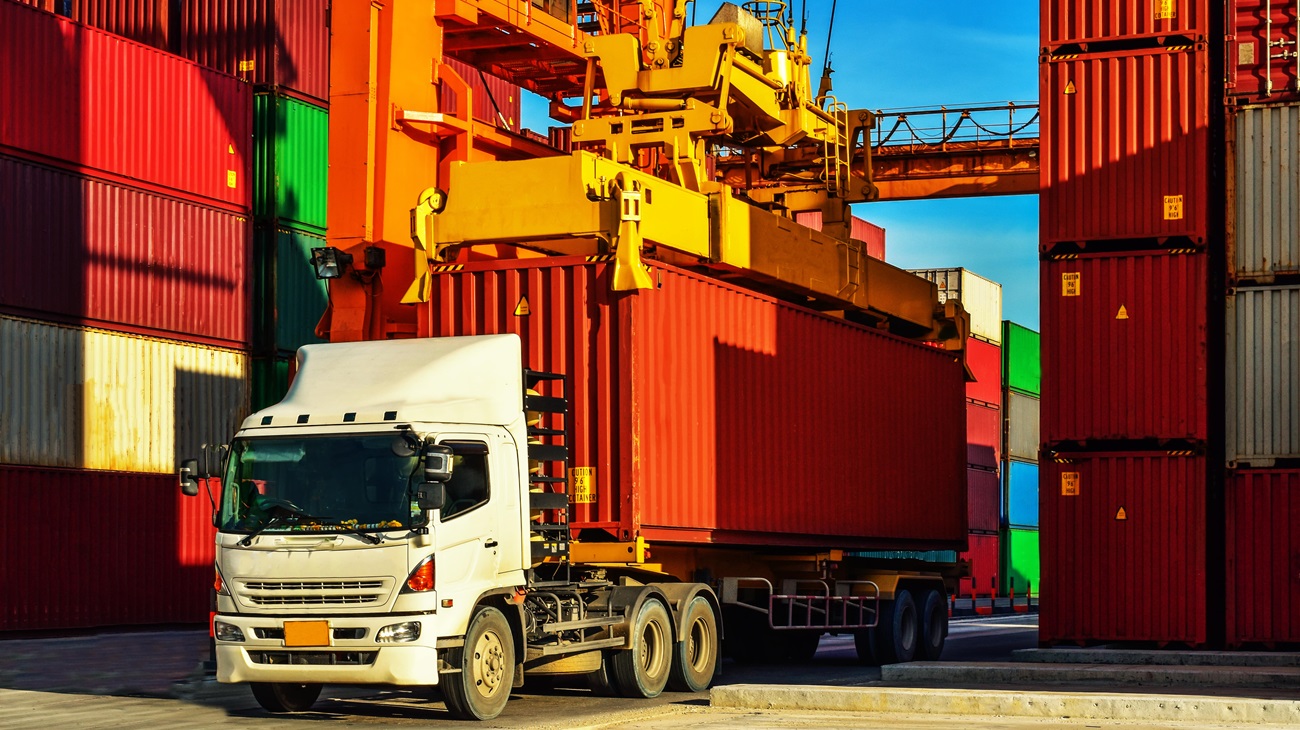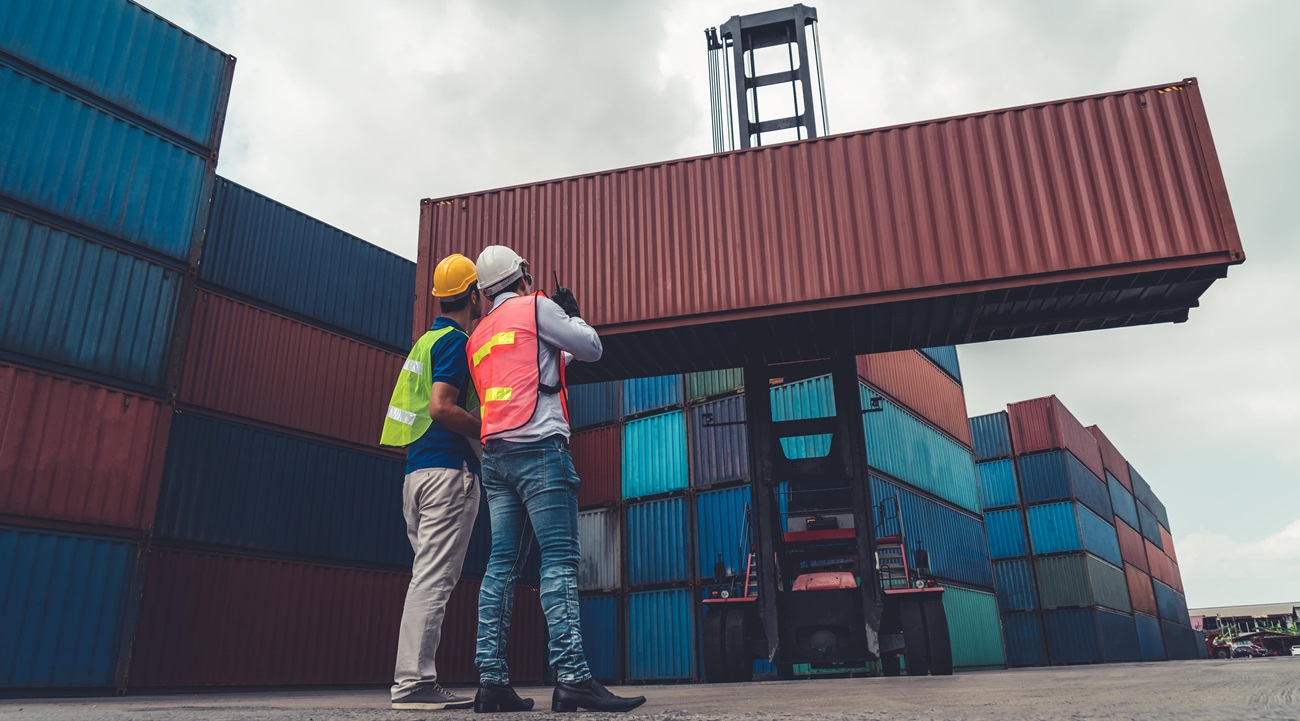Different Ways to Load/Unload Container

Container loading/unloading refers to transferring goods or cargo between a container and a vehicle, such as a truck, train, or ship. It is a complex task with a lengthy process. It is an essential component of the logistics industry, as it enables the safe and efficient transportation of goods from one location to another.
There are several ways to load and unload containers. Each method has unique advantages and disadvantages. The appropriate way for a specific situation will depend on several aspects, such as the type of cargo, the size and weight of the container, and the available resources. In the following sections, we will provide an overview of some well-renowned methods and accessories.
Manual loading/unloading
It involves the use of human resources, such as workers or labourers, to load and unload goods by hand or with the help of basic tools. Manual loading/unloading methods include using pallet jacks, hand trucks, or dollies to move cargo between the container and vehicle, as well as using ropes or straps to secure and lift cargo by hand. It requires minimal equipment and infrastructure. This method is often used for small-scale or short-distance transportation operations or when access to equipment or infrastructure is limited.
Using Side loader
A Side loader, also called a Side lifter or self-loading, provides a flexible and economical solution for loading and unloading containers and other cargo. It can securely handle shipping containers and other types of cargo, whether they need to be loaded onto or unloaded from trailers, trucks, or trains or placed directly on the ground level. This allows for safe and efficient packing and unpacking of the cargo. The process can be operated with a minimal workforce without requiring extra equipment. It can reduce waiting times and planning efforts. This enables us to provide a seamless and competitive service.
Forklift ramp loading/unloading
A forklift ramp is also known as a portable loading ramp. This method involves a machine with a lifting mechanism and a yard ramp that can move goods to and from the container. These are customisable according to needs. It is a faster and more efficient process, which can help reduce overall loading time and costs. It can handle heavier loads, which is more suitable for large-scale operations. It can also improve safety by reducing workers' risk of injury.
Using container crane

The container crane lifts containers on and off ships using a long, horizontal arm known as a boom. An operator occupies a glass cabin linked to a "trolley" device near the top of the crane. The operator can manoeuvre the cabin and trolley along the boom to position them directly above the container they need to lift. Using cables, the crane operator can then lower a spreader device onto the container's top, which secures it using twist locks. This enables the crane to raise and relocate the container. The crane has the ability to unload goods of any length, including long beams, sheets, or plates. With the crane arm's extended reach, containers can be unloaded from a distance, providing greater flexibility for container placement.
Conveyor system
The Conveyor systems are crucial in loading and unloading goods in shops, warehouses, stockyards, and similar locations. It requires a highly adjustable jack-up platform to execute the process. Conveyors come in various types, such as gravity-fed, powered, or belt conveyors. They are frequently utilised to move bulky items, which reduces the need for manual handling and minimises workplace injuries. The system is especially well-suited for transporting carton packages with a flat bottom. During transportation, it facilitates quick and safe movement between two points, enhancing work efficiency and reducing labour-intensive tasks.
Lift on/lift off method
Lift on, lift off (LO/LO) is becoming popular as a technique for loading and unloading containers. This approach is commonly applied when dealing with a large, heavy, or fragile load requiring special transport attention. It is a versatile method that can handle various types of cargo. It is essential to note that LO/LO may take longer and incur more costs than other loading and unloading techniques. Considering the time and budget factors is crucial when deciding on this method.
Roll-on roll-off method
The Roll-on roll-off (RORO) method has gained popularity in loading and unloading containers. This technique employs a ramp for containers to roll onto trucks or trains. They are specially designed to work for wheeled cargo. RoRo system has the advantage of being independent of lifting equipment like cranes. This allows for faster and safer operations. These benefits lead to increased efficiency, shorter delivery times, and cost savings.
Common equipment used to load/unload a container

Loading and unloading containers is a vast process. Besides the above ways, some common equipment is used in various steps to load and unload the container and complete the shipment. They are straddle carriers, reach stackers, front-end and back-end loaders, terminal tractors, weighbridges, dock levellers, dunnage bags, chassis, strapping and lashing accessories and many more.
Best practices guideline
Loading and unloading containers are potentially dangerous tasks. It is essential to obey best practices to ensure the safety of employees and prevent accidents. Here are some best practice guidelines:
- Plan the process: Before starting, it is vital to plan the load/unload process, including identifying potential hazards and establishing safety protocols.
- Use proper equipment: Use equipment designed for container handling, such as reach stackers or forklifts, and ensure they are regularly maintained and inspected.
- Ensure the container is stable: Check that the container is durable and securely anchored before beginning the process. Use chocks or blocks to prevent the container from moving.
- Wear appropriate personal protective equipment (PPE): Workers involved in loading or unloading containers should wear appropriate PPE, such as hard hats, safety glasses, and gloves.
- Communicate effectively: Communication is crucial during the loading and unloading process. Workers should be trained to use clear, concise hand signals or radio communication to avoid misunderstandings.
- Be aware of the environment: Be mindful of the environment around the container, including overhead obstacles, uneven surfaces, or other potential hazards.
- Avoid overloading: Do not overload the container beyond its capacity. Overloading can cause the container to tip or become unstable, resulting in serious accidents.
- Follow safe lifting practices: When lifting containers, use proper lifting strategies such as bending at the knees, keeping the back straight, and using leg muscles to lift.
Conclusion
From the above container load/unload ways, you can select the perfect one that can meet your needs. Your local container transport service provider, Expert Logistics, can simplify this task and transform it into a smooth operation in Melbourne. It is essential to select the most suitable method to ensure the safety of the cargo and the personnel involved, minimise costs and maximise efficiency. Proper planning, training, and communication are crucial for a successful container loading and unloading operation, whether by crane, forklift, or side loader.

